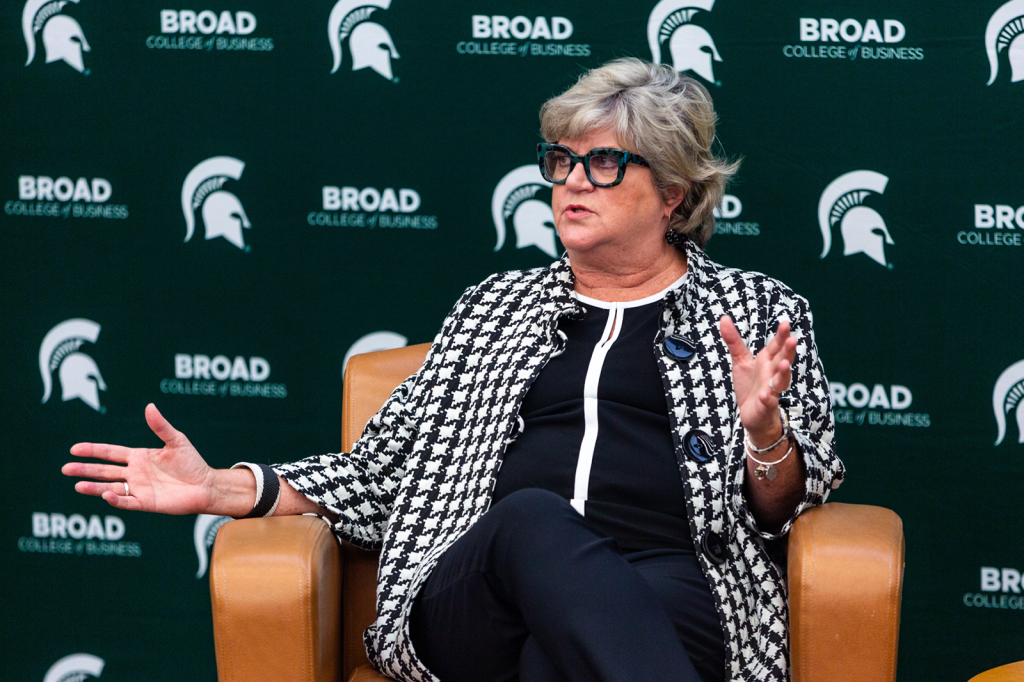Has 2018 just been coined as the year of emergent eco-fashion trends? Many consumers as well as companies in the industry would reply with a unified “YES.” According to Broad College of Business Professor Paulette Stenzel, who possesses both a strong passion and immense knowledge base on the topics of fair trade and sustainability, eco-fashion is “a term used to describe fashion that avoids environmentally-harmful materials and production methods, as well as items made by workers who are paid fair wages and work in safe conditions.”

Paulette Stenzel
With social media being prominent as ever, consumers can share their stances on social and environmental issues with the click of a button, reaching the views of users worldwide. As millennials obtain higher purchasing power, it is vital to the success and growth of companies in the industry to listen to their consumers and reflect their values in company practices. Worldwide, 66 percent of millennials stated that in return for fashion labels providing sustainable and eco-friendly products, they would be willing to spend more on their purchases.
It is more important now than ever that companies and consumers alike move towards production and consumption of clothing produced in environmentally friendly ways. As noted by Stenzel, “Consumers and companies should move toward production of clothing produced in environmentally-friendly ways because to do so otherwise would waste precious resources, contaminate the environment, and hurt people working in the garment industry. The Nation reports that 13 million tons of clothing is trashed every year.”
Between consumer demands for companies to produce eco-friendly fashion and its strong potential in the luxury market, companies have begun to find alternatives to materials such as leather, going “vegan.” Some of the eco-friendly textiles being used as alternatives for leather include apple peels, pineapple waste, and mushrooms. Consumers’ call for eco-friendly fashion has led to great technical advances in the fashion industry, as well as the necessity for companies to be transparent with their customers on products and practices.
For companies looking to move forward towards environmentally and socially friendly ways of producing fashion items, Stenzel suggests following the example of companies such as Patagonia, a fair-trade clothing producer whose mission statement is, “Build the best product, cause no unnecessary harm, use business to inspire, and implement solutions to environmental crisis.”
Consumers seeking to be responsible in their purchases of clothing items should purchase from companies whose clothing is manufactured to last. In doing so, consumers can buy fewer items over the course of time and, as a result, fewer items will end up in landfills. In addition to this, buying from companies that pay fair wages to workers and provide safe work conditions is also a key aspect of doing one’s part in buying from an eco-friendly fashion producer.
Individuals like Stenzel have faith in this growing trend as well as millennials buying these products: “They ‘get it.’ They know that there is no ‘Plan B’ after we destroy the Earth through the overuse of precious resources,” she said.




